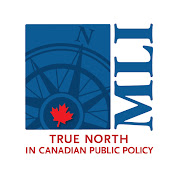As India’s Prime Minister Narendra Modi landed in Washington, D.C., the Trump administration announced its plans for “reciprocal” tariffs on countries that tax U.S. goods. These tariffs, if implemented, could have a devastating effect on India’s economy, particularly on its export-oriented sectors. However, much of the anxiety evaporated as the two leaders pushed aside contentious issues and focused on convergences. By the time Modi left for New Delhi, both camps exuded an air of optimism.
President Donald Trumphad once called India a “tariff king.” The average Indian import tariffs stand at 17 percent, far higher than China’s (6.5 percent) and Canada’s (1.8 percent). But that wasn’t the only sticking point. The issue of the H-1B visa, a program that allows skilled international workers to work in the U.S., has enraged the MAGA base due to a perceived increase in job competition, while Indians were incensed by the images of their brethren sent back to India …





![Trump-Modi Meeting Strengthened U.S.-India Relationship | Opinion [Video]](https://canadanewsvideo.com/wp-content/uploads/2025/02/mp_729501_0_donaldtrumpnarendramodijpg.jpg)




![Federal NDP pledges mental-health coverage, non-Tesla EV rebates - National [Video]](https://canadanewsvideo.com/wp-content/uploads/2025/04/mp_755149_0_23e23a8ba5d4394df49658f03a0f5bb5aa03759ede73204490185ec625264313dcff1djpg.jpg)
![Day 1 of advance voting sees long lines at Metro Vancouver polling stations [Video]](https://canadanewsvideo.com/wp-content/uploads/2025/04/mp_755022_0_longlineupsurreyadvancevotingjpeg.jpg)
![Kamloops, B.C., school district could cut nearly 80 positions [Video]](https://canadanewsvideo.com/wp-content/uploads/2025/04/mp_753012_0_kamloopsschoolboardofficejpg.jpg)
![Japan qualify for BJK Cup finals with win over Canada [Video]](https://canadanewsvideo.com/wp-content/uploads/2025/04/mp_752951_0_67fb9cfd90799imagejpg.jpg)
